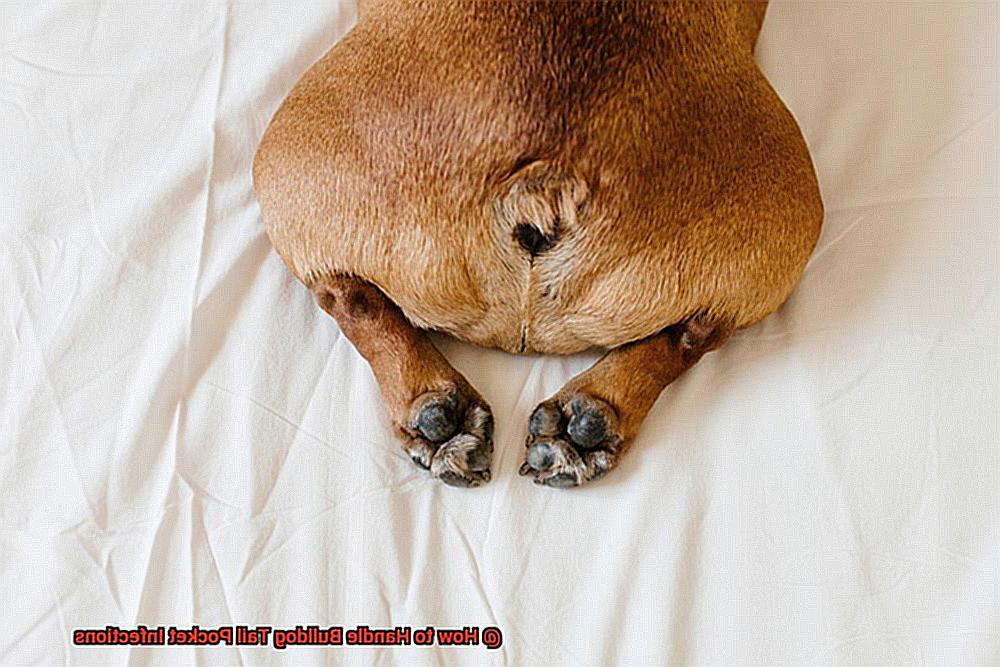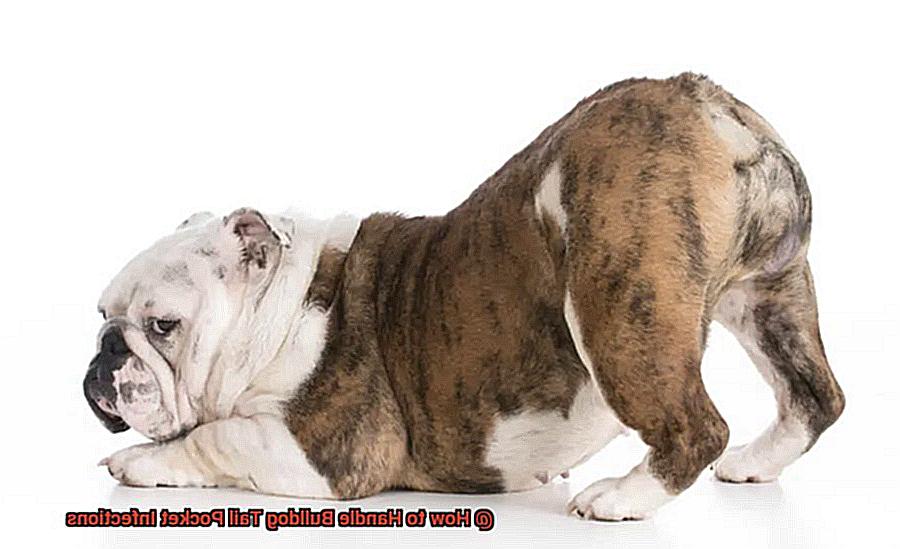How to Handle Bulldog Tail Pocket Infections?
Are you a bulldog owner? If so, you may be familiar with tail pocket infections. This bacterial infection is common in bulldogs and can cause your pup extreme discomfort. Bacterial infections are common in bulldogs and can cause your pup extreme discomfort. But don’t worry; there are ways to treat and prevent this disease.
In this blog post, we’ll discuss what causes tail pocket infections, how to spot them, and how to treat them. Plus, we’ll provide tips on how to keep your bulldog’s tail pockets clean and healthy. By the end of this post, you’ll have all the information you need to help ensure your dog remains happy and healthy.
Staphylococcus pseudintermedius is the bacteria that causes tail pocket infections. When the area around a bulldog’s tail becomes dirty or too damp, the bacteria multiply quickly, leading to an infection. Symptoms include redness and swelling around the affected area as well as pain when the tail is touched or moved.
Fortunately, there are steps you can take to avoid these infections from occurring in the first place. Cleaning their tail pockets regularly with warm water and antibacterial soap will help prevent any future problems. Furthermore, trimming their fur around their tails short will reduce moisture on their skin and reduce irritation.
If your dog does have a tail pocket infection, it’s important to seek medical attention right away for a proper diagnosis and treatment.
To fight off the infection and reduce any pain your dog may be feeling, your veterinarian may prescribe antibiotics or other medications.
With proper care, most infections can be eliminated quickly.
Anatomy of a Bulldog’s Tail Pocket
Contents
- 1 Anatomy of a Bulldog’s Tail Pocket
- 2 Causes of Tail Pocket Infections
- 3 Symptoms of Tail Pocket Infections
- 4 Diagnosis and Treatment of Tail Pocket Infections
- 5 Prevention Tips for Bulldog Owners
- 6 Common Misconceptions about Bulldog Tail Pockets
- 7 How to Clean Your Bulldog’s Tail Pocket
- 8 When to Seek Veterinary Assistance for Your Bulldog’s Tail Pocket Infection
- 9 Conclusion
Bulldogs are a unique breed, with one of their most recognizable features being the tail pocket. This pocket is located at the base of their tail and is filled with skin, fur, and other debris. To ensure your pup’s health and happiness, it’s important to keep this pocket clean and well maintained.

The anatomy of a bulldog’s tail pocket is quite fascinating. It looks like a small pouch hanging off the end of the tail, made up of soft tissue and fur that can easily trap dirt and grime.
To keep it clean, warm water and gentle soap should be used to wash away any buildup.
If you notice any redness or swelling in the area, it could be a sign of infection. In this case, you should bring your pup to the vet right away for medical attention.
Causes of Tail Pocket Infections
Tail pocket infections are a common issue for dogs, but they can be avoided with proper hygiene and care. Knowing the causes of these infections is essential to keeping your pup healthy and happy.
Poor sanitation is one of the leading causes of tail pocket infections. When bacteria and yeast accumulate in the tail pocket due to a lack of cleaning, it can lead to infection. Additionally, moisture and debris can also accumulate in this area, causing irritation and infection.
Allergies can also contribute to tail pocket infections, as allergens such as pollen, dust mites, or fleas can cause inflammation in the skin around the tail pocket.
Certain breeds of bulldogs may be more prone to tail pocket infections due to their anatomy and the size of the tail pocket. Owners should take extra caution when cleaning around their dog’s tail area, as this can be especially messy.
Preventing tail pocket infections is possible if pet owners are aware of what causes them. Regularly cleaning your pup’s tail area with a damp cloth or brush will help keep bacteria and other irritants at bay.
Keeping an eye out for signs of infection, such as redness or swelling, will also allow you to catch any problems early on before they worsen.
Symptoms of Tail Pocket Infections
Tail pocket infections can be a source of distress and discomfort for cats. Knowing the signs of this infection can help you get medical attention promptly and ensure your pet’s health is taken care of.
The most common symptoms include redness and swelling in the area, as well as pain and tenderness. The tail pocket may also feel hot to the touch or be filled with pus. Discharge and a bad odor may also be present. The skin around the tail pocket may also become flaky or itchy.
If left untreated, these infections can become incredibly infectious, leading to fever and lethargy in your cat.
If you notice any of these symptoms, it is essential to seek professional help right away so that your pet can receive the necessary treatment.
Diagnosis and Treatment of Tail Pocket Infections
Tail pocket infections can be a serious threat to bulldogs’ health if left unchecked.
Fortunately, diagnosis and treatment of these infections are relatively straightforward. Veterinarians typically diagnose tail pocket infections through physical exams and laboratory tests.
Treatment usually involves topical and oral antibiotics, as well as cleaning the infected area with an antiseptic solution.
In more severe cases, surgery may be necessary to remove any infected tissue or drain abscesses that have formed. To prevent infection, it is essential for bulldog owners to keep their pets’ tail pockets clean on a regular basis.
Prevention Tips for Bulldog Owners
As a bulldog owner, it is important to take preventive measures to ensure your pet’s tail pocket stays clean and healthy. Regularly inspect the area for signs of infection, such as redness or swelling, and use a mild soap and warm water solution to clean it.
Additionally, trim any long hairs around the tail pocket that could trap dirt and debris, and monitor your bulldog’s activity to make sure he is not scratching or biting at his tail pocket.
If you notice any signs of infection, such as excessive licking, redness, swelling, or discharge, take your bulldog to the vet immediately. Finally, make sure your bulldog is up-to-date on all vaccinations and parasite prevention treatments.
Cleaning the Tail Pocket
To keep your bulldog’s tail pocket clean and healthy, use a mild shampoo and warm water solution when cleaning it. Avoid using any harsh chemicals or scented products on the area, as they can irritate the skin and cause more problems. Be sure to dry the area thoroughly after cleaning, as moisture can promote bacterial growth that can lead to infections. If you notice any signs of infection, such as redness, swelling, or discharge, seek veterinary help immediately before it gets worse.
Long Hair Trimming
To prevent infections from spreading in this area, trimming long hair around your bulldog’s tail pocket is essential.
Long hairs can trap dirt and debris that can lead to bacterial growth if not treated properly on a daily basis, so be sure to use a pair of scissors specifically made for cutting dog hair so you don’t accidentally cut too close to their skin, which could cause irritation or injury.
Also keep an eye on your bulldog’s movements to make sure he isn’t scratching or biting at his tail pocket since, if left untreated, it could result in an infection.
Monitoring
When it comes to preventing infections in their tail pocket region, monitoring your bulldog’s routine is key in order to spot any potential issues early before they become more serious health problems later this year.
If you notice that they are excessively licking, scratching, or biting at their tail pocket, this may be a sign of an infection that needs medical attention right away before it gets worse.
Vaccinations and Parasite Prevention
Making sure your bulldog is up-to-date on all vaccinations and parasite prevention programs is critical for preventing infections in their tail pocket area as well as other areas of their body.
Vaccines help them avoid diseases such as distemper, parvovirus, hepatitis, and rabies, while parasite prevention programs help keep fleas, ticks, heartworms, and other parasites away from them, which can also be harmful if not treated properly in time.
Common Misconceptions about Bulldog Tail Pockets
Bulldogs are undeniably adorable, but their unique look can lead to some common misconceptions about their tail pockets. Contrary to popular belief, tail pockets are not a breed-specific defect and can occur in all breeds of dogs.
It’s important to keep your bulldog’s tail pocket clean, but it doesn’t require daily maintenance. Sweeping the area once or twice a month should be enough for most dogs. And don’t worry—tail pockets are not dangerous! Although there is a slight risk of infection if the area isn’t kept clean, this can be minimized with proper cleaning and care.
If your bulldog does develop an infection in their tail pocket, you may be able to treat it at home with over-the-counter medications such as antibiotics or antifungal creams. However, if the infection persists or worsens, you should seek veterinary care as soon as possible.
How to Clean Your Bulldog’s Tail Pocket
Cleaning your Bulldog’s tail pocket is an important part of regular grooming and should be done at least once a week. This will help keep your pup healthy and free of viruses. Here are some steps to take to ensure that you are properly cleaning your Bulldog’s tail pocket.
Gather Necessary Supplies
Before you start, make sure you have everything you need on hand. You will need a clean cloth or cotton swab, warm water, a gentle cleanser, and a mild antiseptic ointment or powder.
Start with a Clean Cloth and Warm Water
Begin by using a clean cloth or cotton swab to gently wipe the area around the tail pocket in order to remove any debris or dirt present. Make sure to get into all the crevices so that nothing is left behind.
Use Soap and Water
Once all of the dirt has been removed, use a gentle cleanser to remove any bacteria in the area. Be sure to follow the manufacturer’s instructions for best results, and then rinse thoroughly with warm water until all of the soap is gone.
Thoroughly Dry
After rinsing, it is important to let the area completely dry before applying any ointment or powder. To do this, use a clean towel to gently dab away any excess moisture from your Bulldog’s tail pocket.
Apply Antiseptic Cream or Powder
If necessary, use a mild antiseptic cream on the tail pocket to help prevent infection from arising in this vulnerable area of your dog’s body. To avoid further infections, make sure to keep this area dry and clean at all times.
When to Seek Veterinary Assistance for Your Bulldog’s Tail Pocket Infection
Knowing when to seek veterinary assistance for your bulldog’s tail pocket infection is essential. If the infection is severe and does not respond to home treatment, a veterinarian can diagnose the cause and prescribe antibiotics or other medications.
Additionally, if the tail pocket appears to be filled with pus, a vet visit is necessary as this could indicate an abscess that needs to be drained. In cases of recurrent or severe infections, your vet may recommend surgical removal of the tail pocket.
Finally, if your bulldog has had multiple tail pocket infections, neutering or spaying may be recommended in order to reduce the risk of future infections. This will help ensure your bulldog stays healthy and happy for years to come.
Conclusion
Bulldog owners, take heart! Tail pocket infections don’t have to be a cause for concern. By understanding a bulldog’s anatomy, recognizing the signs of infection, and taking preventive steps, you can help keep your pup healthy and happy.
To prevent infection, routinely wash the tail pocket with mild soap and warm water, followed by thorough drying. If your dog does get an infection, seek veterinary help immediately to get them back on track.




